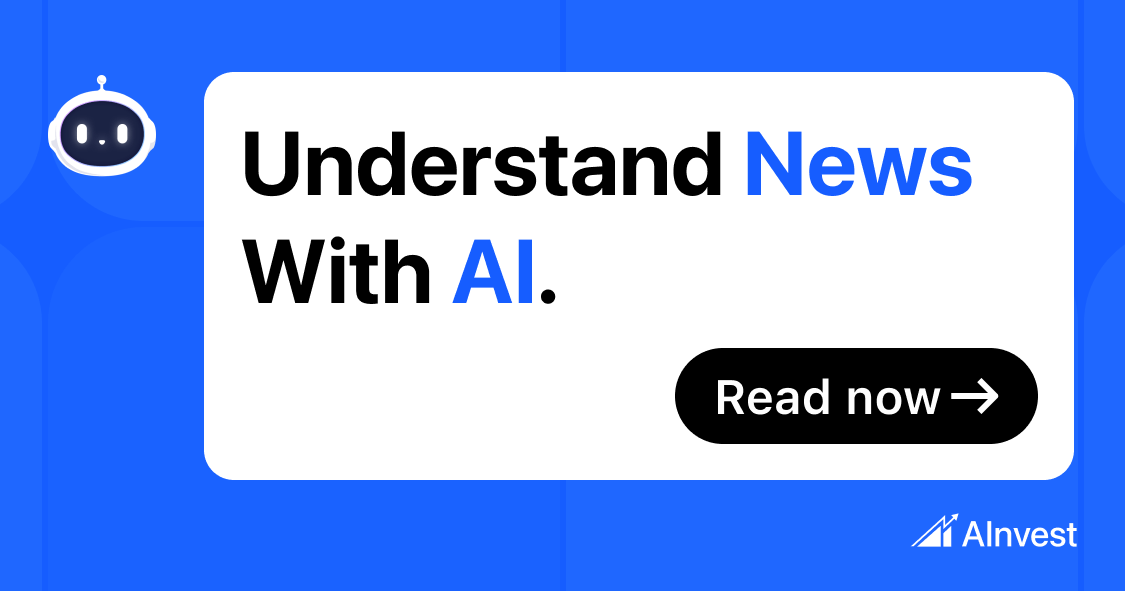Tools & Platforms
Ways to help workers suffering from AI-related job losses

Job losses are starting to accelerate due to AI, robotics, and automation. Anthropic CEO Dario Amodei warns that AI could cut half of all entry-level white-collar jobs in the coming years. A McKinsey report finds that “current gen AI and other technologies have the potential to automate work activities that absorb up to 70 percent of employees’ time today.” A Wall Street Journal article also cites leading CEOs who claim “AI will wipe out jobs.” OpenAI CEO Sam Altman has ominously written that the “2030s are likely going to be wildly different from any time that has come before.”
AI’s impact on the workforce is hard to forecast because so many factors affect economic projections. There are uncertainties concerning trade imbalances, exchange rates, technology deployment rates, shifts in business models, political developments, geopolitical forces, and CEO proclivities toward their own workers. Former Harvard University President Larry Summers once quipped that predictions are so fraught with error that prognosticators never should use a date and prediction in the same sentence.
But given the magnitude of the phenomenon, it is important to think about ways to help workers who are likely to bear the impact of AI-related job losses. As I argue in my Brookings Press book, “The Future of Work: Robots, AI, and Automation,” several policy reforms would help people navigate the transition to a digital economy. This piece offers an overview of them.
Encourage companies to retrain workers
Businesses are on the frontlines of worker layoffs and have some responsibility for retraining employees. They need to finance job reskilling and upskilling for their employees so those individuals don’t get left behind. Governments should consider expanding tax credits for businesses that retrain laid-off employees, as these investments benefit the entire society. It is not in the country’s national interest for large numbers of people to become part of a permanent underclass struggling and failing to pay their monthly expenses despite their best efforts. Replacing these workers with AI would doom many individuals to a dismal financial future and create a host of social, economic, and political problems, many of them unique to AI’s role in worker displacement.
Make health benefits portable
It is vital that workers retain access to health insurance if they lose their jobs. Since much of American healthcare is handled through employers, job-related disruptions are especially harmful for workers. They may lose access to insurance or be forced to shift to another medical network that does not include their current healthcare providers. One of the benefits of the current Affordable Care Act exchanges is healthcare coverage offerings for those between jobs. Given the increasing threat of AI-related job losses, policymakers should ensure these mechanisms remain strong in safeguarding American workers’ access to healthcare as job disruptions spread.
Reduce vesting requirements for retirement benefits
Many organizations have lengthy vesting requirements, sometimes spanning three to six years, before people become eligible to get employer matches for retirement and keep that money. With the increasing rates of “job churn” due to AI and automation, people may end up working for many different organizations in a span of a few years. Lengthy vesting requirements will hurt workers who lose vesting time at each job transition, substantially jeopardizing their financial futures post-retirement. Employers should consider reducing vesting time to three or six months to aid those moving from job to job.
Loosen job licensing requirements
People who lose their jobs due to AI or automation may want to break into other occupations, but these shifts are often not easy. Many new occupations require specialized training, certification, and testing that can take months or sometimes years to secure. When certification is related to health and safety, these state-level licensing requirements make complete sense. Yet, there are some certifications and testing requirements not linked to health and safety that states should consider loosening to make it easier for people to enter new fields. This is especially true for individuals who are otherwise well-equipped to safely practice in those fields but face limitations due to their nontraditional education or language proficiency. For example, some states require degrees even if the individual has years of experience doing certain tasks. Policymakers could change those requirements to allow educational credentials or work experience to fulfill certification requirements.
Create worker retraining accounts
In the advent of AI, to incentivize society-wide upskilling, policymakers should consider creating worker retraining accounts that function similarly to retirement accounts. These accounts enable workers to use tax-deferred money to pay for job retraining. The program will help people gain new skills to keep up with the pace of innovation and navigate the vicissitudes of the digital marketplace. To sustain advancements in American innovation, policymakers should consider creative ways to maintain a digitally apt workforce.
Pay earned income tax credits monthly
Many individuals receive earned income tax credits each year after they file their income taxes. This allows them to get refunds if they have low incomes or high childcare expenses. Unless people want to make a large purchase or upgrade their homes, an annual payment will not help them with monthly expenses or provide a regular source of income. Making these payments monthly would create flexibility in terms of income support and provide more continuity over time, especially for workers in more vulnerable frontline jobs.
Clarify independent contractor rules
There should be clearer rules regarding the classification of workers as independent contractors. Right now, many individuals who work full-time are not classified as full-time employees and are thereby ineligible for health, retirement, or disability insurance benefits. This phenomenon is particularly prominent in the tech industry, which heavily relies on temp workers to perform core functions such as data analysis, content moderation, or administrative tasks. Having clearer rules would ensure that those working full-time get the benefits traditionally associated with full-time employment.
Fund job retraining programs in higher education
Some community colleges and other institutions of higher education are offering retraining programs for adults who need to upgrade their skills. As a way of assisting with the transition to a digital economy and helping individual workers suffering from job losses, governments should consider financially supporting these programs. Colleges and universities are a vital part of the retraining ecosystem and deserve to be helped as they carry out this important mission.
Make sure laid-off workers have access to high-speed internet
Twenty-four million Americans still lack access to high-speed internet at home, hindering their ability to utilize digital job boards and resources that help them learn new skills. For instance, many adult retraining programs take place online. To ensure all American workers can access these retraining programs, policymakers must guarantee all Americans have access to high-speed internet. My colleague Nicol Turner Lee has argued in her book, “Digitally Invisible: How the Internet Is Creating the New Underclass,” that a lack of access to high-speed broadband dooms people to poverty and creates huge problems for the individuals affected, as well as the country as a whole. As more job listings, training, and hybrid opportunities migrate online, it is imperative that individuals and employers reduce the barriers to seamless access and help those seeking new positions.
Ensure data-based job evaluations are fair
Employees are increasingly performing their tasks on computers, generating data analytics known as key performance indicators (KPI) that can serve as the basis for determining who gets laid off. As hybrid work becomes increasingly common, employees may receive laptops from their employers and take them home, which may inadvertently allow employers access to online activity that takes place on company equipment or networks. Individuals may be downgraded or lose their jobs because of data analytics that may portray them unfairly. Business leaders need to make sure these job-related analytics are fair and impartial and not unjustifiable intrusions into personal privacy and ensure that employees have clear expectations about their privacy in the hybrid workplace. Employers must also take into account those who successfully integrate AI into their job functions and judge them fairly for their performance rather than traditional productivity metrics.
Mitigate disparate job impacts
Not every worker is going to share the same workplace experiences. There are known disparities by race, gender, age, disability, immigration status, and veteran status, among other characteristics. Some individuals receive visas linked to a specific job or company, and encounter problems when they are laid off. Policymakers should make sure the impact of AI-related job losses does not fall disproportionately on those least able to retrain themselves, get new jobs, or obtain appropriate visas. Otherwise, there will be disparate impacts on marginalized populations that guarantee a poor economic future.
Consider a four-day workweek as workers become more efficient and productive
As workers become more efficient and productive due to AI and other digital tools, companies should share the profits with them by considering four-day workweeks. Some employers have moved in this direction and have found positive results. One software company saw a 130% increase in revenue in addition to fewer sick days. Forward-looking companies should experiment with novel methods of work management and reward employees whose hard work and efficient performance improve the bottom line.
These and other recommendations require careful consideration by policymakers, industries, and employees, so that the AI transition can succeed with fewer casualties in the workplace and the broad labor market.
Tools & Platforms
Starbucks Deploys AI Technology to Modernize Inventory Management

TLDRs:
- Starbucks launches AI system to improve inventory tracking across North American stores.
- NomadGo AI tablets help count shelves and flag low-stock items automatically.
- AI adoption boosts inventory checks eightfold, reducing errors and waste.
- Food and beverage chains increasingly rely on AI for efficient stock management.
Starbucks is set to introduce an AI-based inventory counting system to more than 11,000 company-owned stores across North America by the end of September.
The system, built on NomadGo technology, uses handheld tablets equipped with software capable of scanning shelves, counting products, and alerting staff when items run low.
The new system has already been trialed in thousands of Starbucks locations, where it has dramatically increased the frequency of inventory checks. Traditionally, stock-taking has been a weekly or monthly task prone to human error, but the AI system enables stores to perform continuous monitoring, ensuring that key ingredients remain available at all times.
Transforming Inventory From Task to Process
The adoption of AI represents a major shift in how Starbucks manages its supply chain. For decades, inventory counting relied on manual methods, which were often tedious and inaccurate. Even the introduction of barcodes in the 1970s only partially automated the process.
With NomadGo’s AI solution, stores can now count inventory eight times more frequently than before. The technology combines computer vision and 3D spatial intelligence to identify and track products automatically.
This continuous monitoring helps reduce human error and ensures more accurate stock levels, particularly for perishable items such as cold foam, oat milk, and specialty syrups.
Food and Beverage Pressure Points
Unlike traditional retail, food and beverage businesses face unique inventory challenges. Ingredients can have short shelf lives and unpredictable demand, making accurate stock management critical.
Starbucks’ focus on specialty items highlights why AI inventory systems are especially valuable in this sector.
🌟 Starbucks just rolled out AI inventory counting across 11,000+ stores.
✅ 8× faster
✅ 99% accuracy
✅ 1 hour ➝ 10–15 mins
🚀 Saving 16,500 labor hours per weekNot about replacing baristas—about freeing them to focus on coffee ☕ + customers.#AI #Starbucks #RetailTech… pic.twitter.com/Ok5qllIosK
— Elvis Espinoza (@ElvisEsp85) September 3, 2025
By keeping track of high-demand items and seasonal ingredients, Starbucks ensures that customers can consistently enjoy their favorite beverages. This level of precision not only reduces waste but also maintains the high customer experience standards the brand is known for, minimizing the risk of stockouts that could drive customers to competitors.
Broader Technological Push
Starbucks is not stopping at inventory management. The company has also rolled out other technology tools for its staff, including a virtual assistant and an order sequencing system.
These innovations form part of a broader digital transformation strategy aimed at streamlining operations, improving efficiency, and enhancing the overall customer experience.
By leveraging AI in multiple areas of its operations, Starbucks demonstrates how technology can modernize long-standing business processes and create smarter, more responsive retail environments. As food and beverage chains face increasing pressures from consumer demand and supply chain complexity, AI adoption is likely to become a standard practice across the industry.
Looking Forward
Starbucks’ deployment of AI inventory management technology marks a significant step forward in operational efficiency for the coffee giant. By combining real-time monitoring, automated tracking, and intelligent reporting, the company is setting a new benchmark for inventory management in the food and beverage sector.
With these tools, Starbucks aims to ensure that customers enjoy consistent product availability while reducing waste and improving staff efficiency, a win-win for both the business and its patrons.
Tools & Platforms
AI Familiarity Erodes Public Trust Amid Bias and Misuse Concerns

In the rapidly evolving world of artificial intelligence, a counterintuitive trend is emerging: greater familiarity with AI technologies appears to erode public confidence rather than bolster it. Recent research highlights how individuals who gain deeper knowledge about AI systems often become more skeptical of their reliability and ethical implications. This shift could have profound implications for tech companies pushing AI adoption in everything from consumer apps to enterprise solutions.
For instance, a study detailed in Futurism reveals that as people become more “AI literate”—meaning they understand concepts like machine learning algorithms and data biases—their trust in these systems diminishes. The findings, based on surveys of thousands of participants, suggest that exposure to AI’s inner workings uncovers vulnerabilities, such as opaque decision-making processes and potential for misuse, leading to heightened wariness.
The Erosion of Trust Through Education
Industry insiders have long assumed that education would demystify AI and foster acceptance, but the data tells a different story. According to the same Futurism report, participants who underwent AI training sessions reported a 15% drop in trust levels compared to those with minimal exposure. This literacy paradox mirrors historical patterns in other technologies, where initial hype gives way to scrutiny once complexities are revealed.
Compounding this, a separate analysis in Futurism from earlier this year links over-reliance on AI tools to a decline in users’ critical thinking skills. The study, involving cognitive tests on AI-dependent workers, found that delegating tasks to algorithms can atrophy human judgment, further fueling distrust when AI errors become apparent in real-world applications like automated hiring or medical diagnostics.
Public Sentiment Shifts and Polling Insights
Polling data underscores this growing disillusionment. A 2024 survey highlighted in Futurism showed public opinion turning against AI, with approval ratings dropping by double digits over the previous year. Respondents cited concerns over job displacement, privacy invasions, and the technology’s role in amplifying misinformation as key factors.
This sentiment is not isolated; it’s echoed in broader discussions about AI’s societal impact. For example, posts on platforms like X, as aggregated in recent trends, reflect widespread skepticism, with users debating how increased AI integration in daily life— from smart assistants to predictive analytics—might exacerbate inequalities rather than solve them. Such organic conversations align with formal studies, indicating a grassroots pushback against unchecked AI proliferation.
Implications for Tech Leaders and Policy
For tech executives, these findings pose a strategic dilemma. Companies investing billions in AI development must now contend with a more informed populace demanding transparency and accountability. The Futurism piece points to initiatives like explainable AI frameworks as potential remedies, where systems are designed to articulate their reasoning in human-understandable terms, potentially rebuilding eroded trust.
Yet, challenges remain. A related article in TNGlobal argues that trust in AI hinges on collaborative efforts, including zero-trust security models to safeguard data integrity. Without such measures, the industry risks regulatory backlash, as seen in emerging policies that mandate AI audits to address biases and ensure ethical deployment.
Looking Ahead: Balancing Innovation and Skepticism
As we move deeper into 2025, the trajectory of AI trust will likely influence investment and adoption rates. Insights from Newsweek reveal a mixed picture: while 45% of workers trust AI more than colleagues for certain tasks, this statistic masks underlying doubts about its broader reliability. Industry leaders must prioritize literacy programs that not only educate but also address fears head-on.
Ultimately, fostering genuine trust may require a cultural shift within tech firms, moving beyond profit-driven narratives to emphasize human-centric design. As evidenced by ongoing research in publications like Nature’s Humanities and Social Sciences Communications, transdisciplinary approaches—integrating ethics, psychology, and technology—could redefine AI’s role in society, turning skepticism into informed partnership.
Tools & Platforms
Implications for Tech Sector Valuations

The Trump administration’s 2025 AI Action Plan, titled “Winning the Race: America’s AI Action Plan,” has redefined the strategic calculus for Silicon Valley. By prioritizing deregulation, infrastructure expansion, and ideological neutrality in AI development, the administration has created a policy framework that both accelerates innovation and introduces new risks for tech sector valuations. This analysis examines how the alignment of tech firms with Trump’s industrial policy is reshaping market dynamics, investor sentiment, and long-term competitiveness in the AI era.
Policy Framework: Deregulation, Infrastructure, and Ideological Guardrails
The administration’s core strategy centers on reducing regulatory friction for energy and data center projects. Executive orders exempting these developments from federal environmental reviews and permitting streamlined access to public lands have drawn support from Silicon Valley leaders like San Jose Mayor Matt Mahan, who emphasized the critical need for energy supply to sustain AI infrastructure [1]. Simultaneously, the administration’s push for open-source and open-weight AI models aims to foster a competitive ecosystem while avoiding burdensome state-level regulations [4].
However, this deregulatory approach intersects with ideological mandates. The “Preventing Woke AI in the Federal Government” executive order requires AI models used by federal agencies to be “truth-seeking” and “ideologically neutral,” effectively banning contracts with firms whose chatbots address topics like critical race theory or transgenderism [3]. This has forced tech companies to re-engineer models to align with federal procurement requirements, creating a balancing act between compliance and technical integrity.
Strategic Positioning: Tech Firms Align with Federal Priorities
Major tech companies are recalibrating their strategies to align with the administration’s vision. For instance, firms like NVIDIA and AMD are leveraging federal partnerships to develop secure, full-stack AI export packages, capitalizing on the administration’s aggressive push to globalize American AI technology stacks [1]. The emphasis on infrastructure has also spurred collaborations with federal agencies for high-security data centers and grid modernization projects [5].
Yet, this alignment is not without friction. California lawmakers have raised concerns about the environmental and affordability impacts of data centers, advocating for stricter energy reporting standards [1]. This tension highlights the challenge of balancing deregulation with sustainability goals—a dynamic that could influence long-term investor confidence.
Investor Sentiment and Valuations: A Mixed Landscape
The administration’s policies have generated a polarized market response. While the Trump administration’s pause on new tariffs in April 2025 triggered a “V-shaped” recovery in tech stocks [6], earlier concerns about an AI-driven valuation bubble led to volatility. For example, the Technology Select Sector SPDR ETF surged 35% in the last three months of 2025, outpacing the S&P 500’s 19% gain [2]. However, UBS warned that U.S. tech valuations now trade at a HOLT Economic P/E above 35 times, nearing levels seen during the dotcom boom [1].
Key players like NVIDIA and AMD have benefited from their dominance in AI infrastructure, with AMD upgraded by Truist Securities due to strong industry feedback on its data center momentum [1]. Conversely, firms like Super Micro Computer (SMCI) and Dell face headwinds from Trump’s tariffs on semiconductors and copper, with SMCI reporting declining non-GAAP earnings per share despite robust revenue growth [2]. These divergent outcomes underscore the sector’s sensitivity to policy shifts and global trade dynamics.
Challenges and Risks
The administration’s focus on ideological neutrality in AI models introduces reputational and technical risks. Critics argue that removing DEI and climate change references from the NIST AI Risk Management Framework could compromise model reliability [3]. Additionally, Trump’s tariffs on semiconductors and copper—while framed as protecting national security—risk inflating infrastructure costs, though large firms may absorb these expenses due to AI’s strategic value [2].
Environmental concerns further complicate the narrative. California’s push for energy reporting standards reflects growing skepticism about the sustainability of data center expansion, a potential regulatory counterweight to federal deregulation [1].
Conclusion
Trump’s AI-driven industrial policy has created a dual-edged sword for Silicon Valley. While deregulation and export incentives are fueling innovation and valuations, ideological mandates and trade policies introduce volatility and long-term uncertainties. For investors, the key lies in distinguishing between firms that can navigate these policy-driven headwinds—such as those with strong federal partnerships and scalable infrastructure—and those vulnerable to regulatory or trade-related shocks. As the administration’s agenda unfolds, the tech sector’s ability to balance compliance, sustainability, and profitability will determine whether the current valuation surge proves sustainable or speculative.
Source:
[1] Silicon Valley mayor agrees with Trump on ‘energy … [https://www.politico.com/news/2025/08/27/silicon-valley-mayor-agrees-trump-energy-00532503]
[2] ‘An existential threat’: For Silicon Valley, falling behind in AI … [https://www.cnn.com/2025/08/18/tech/ai-spending-tariffs]
[3] Trump’s new AI policies keep culture war focus on tech companies [https://www.wunc.org/2025-07-23/trumps-new-ai-policies-keep-culture-war-focus-on-tech-companies]
[4] “Winning the Race: America’s AI Action Plan” – Key Pillars, … [https://www.ropesgray.com/en/insights/alerts/2025/07/winning-the-race-americas-ai-action-plan-key-pillars-policy-actions-and-future-implications]
[5] White House Releases AI Action Plan: Key Legal and …, [https://www.skadden.com/insights/publications/2025/07/the-white-house-releases-ai-action-plan]
[6] Q2 2025 Market Perspective [https://altiumwealth.com/blogs/altium-insights/q2-2025-market-perspective]
-

 Business6 days ago
Business6 days agoThe Guardian view on Trump and the Fed: independence is no substitute for accountability | Editorial
-
Tools & Platforms3 weeks ago
Building Trust in Military AI Starts with Opening the Black Box – War on the Rocks
-

 Ethics & Policy1 month ago
Ethics & Policy1 month agoSDAIA Supports Saudi Arabia’s Leadership in Shaping Global AI Ethics, Policy, and Research – وكالة الأنباء السعودية
-

 Events & Conferences4 months ago
Events & Conferences4 months agoJourney to 1000 models: Scaling Instagram’s recommendation system
-

 Jobs & Careers2 months ago
Jobs & Careers2 months agoMumbai-based Perplexity Alternative Has 60k+ Users Without Funding
-

 Education2 months ago
Education2 months agoVEX Robotics launches AI-powered classroom robotics system
-

 Funding & Business2 months ago
Funding & Business2 months agoKayak and Expedia race to build AI travel agents that turn social posts into itineraries
-

 Podcasts & Talks2 months ago
Podcasts & Talks2 months agoHappy 4th of July! 🎆 Made with Veo 3 in Gemini
-

 Podcasts & Talks2 months ago
Podcasts & Talks2 months agoOpenAI 🤝 @teamganassi
-

 Education2 months ago
Education2 months agoMacron says UK and France have duty to tackle illegal migration ‘with humanity, solidarity and firmness’ – UK politics live | Politics





















